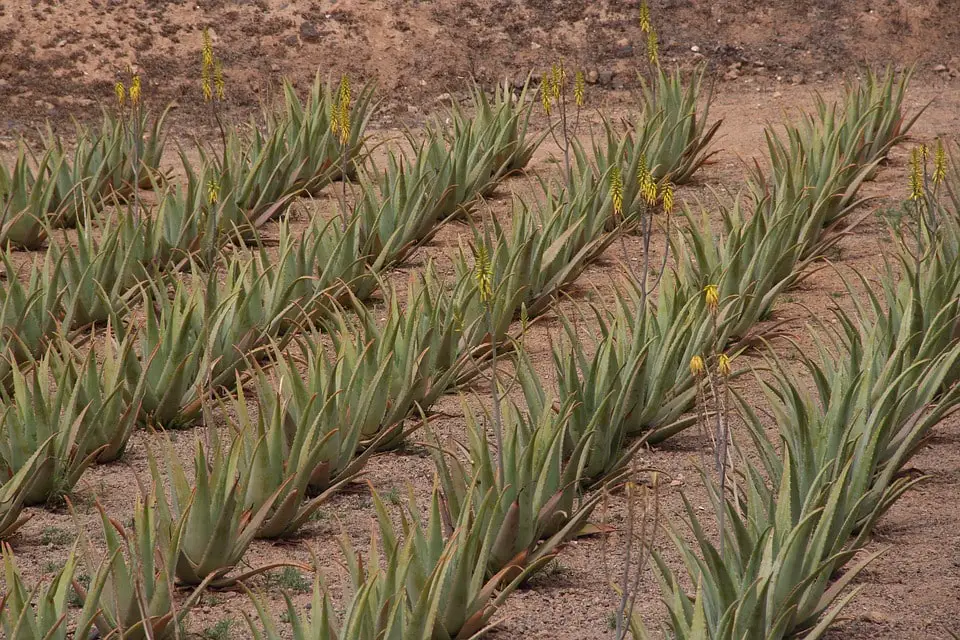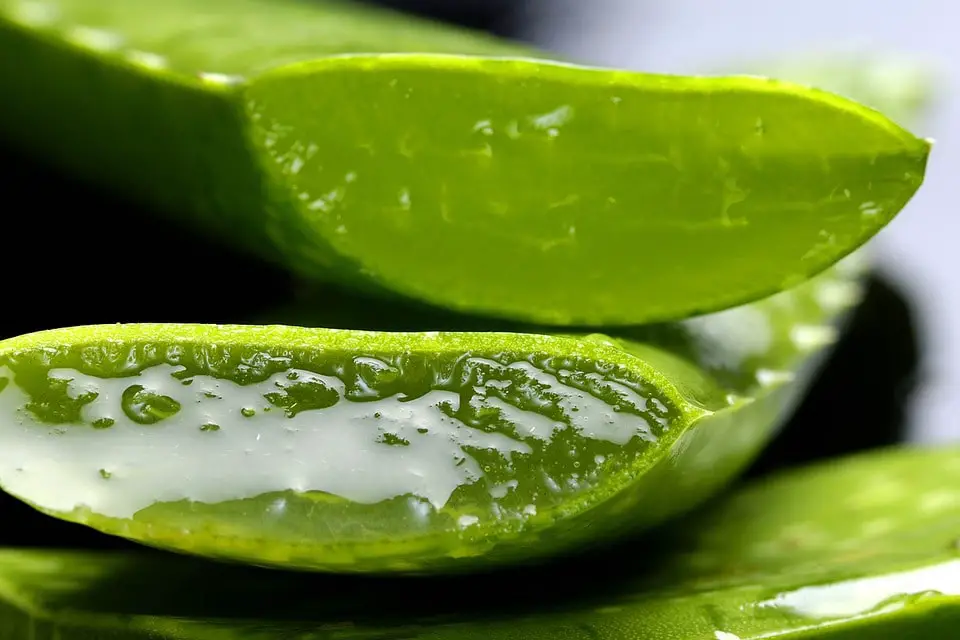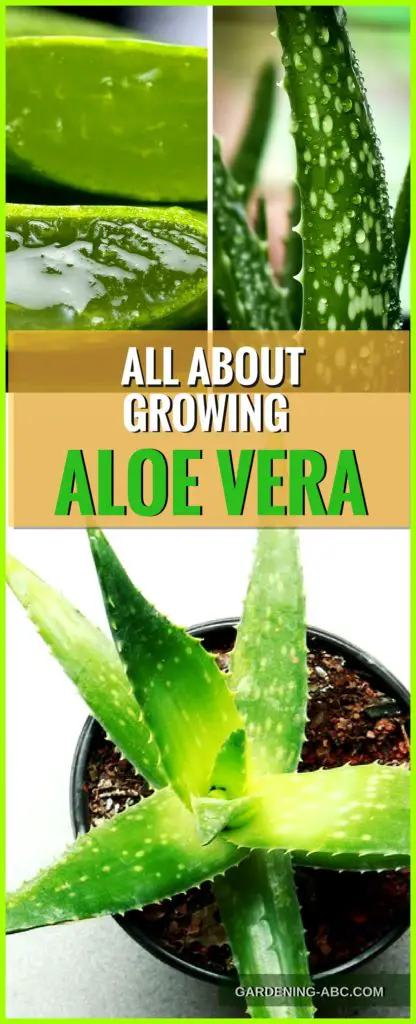We use affiliate links to run our site. When you buy through links on our site, we may earn an affiliate commission, without any added cost to you. Learn more
Aloe vera is a very common household herb and is one of the most useful plants in this world. In this article, we will discuss the importance of Aloe vera and how to grow aloe vera plants in your own garden.
If you are looking for some useful aloe vera growing tips you have come to the right place. Read on…
Why Plant Aloe Vera:
Aloe Vera is an amazing plant to have in your home. It produces both gel and latex that are used for medicine. The followings are some of the amazing benefits of Aloe Vera:
- It Soothes Rashes and Skin Irritations.
- Aloe vera gel has a protective effect against radiation damage to the skin.
- When aloe vera gel is applied to a cold sore a few times a day, it eases the discomfort and helps speed the healing process.
- It moisturizes hair and scalp.
- Aloe vera treats Constipation.
- Aloe vera helps in digestion.
- Aloe Boosts the Immune System.
- Provides Antioxidants and Reduces Inflammation.
How To Grow Aloe Vera
Aspect | Description |
Plant Type | Houseplant |
Sun Exposure | Full Sun, Part Sun |
Soil pH | Neutral |
Bloom Time | Spring, Summer, Fall |
Flower Color | Orange, Pink, Red, Yellow |
Hardiness Zone | 10, 11 |
Lighting | Bright, indirect sunlight or artificial light (Western or southern window is ideal) |
Temperature | 55-80°F (13-27°C); temperatures of most homes and apartments are suitable |
Watering | Allow top third of potting soil to dry out between waterings; water every 2-3 weeks in spring and summer, less frequently in fall and winter (roughly double the time between waterings in fall and winter); excess water should drain out of the pot |
Repotting | Every few years; use slightly larger pot that is wide but not deep; choose well-draining soil; ensure proper drainage |
Pup Production | As aloe plant ages, it may take longer to produce pups or stop producing altogether; consider repotting, adjusting light, temperature, and watering; fungal issues may affect pup production |
Propagation | Remove offsets (pups) from the mother plant and replant them in well-draining succulent potting mix after callous formation; provide indirect light; keep in a warm location |
Outdoor Care | Full sun during summer (above 70°F/21°C), bring indoors if temperatures drop below 60°F/16°C; acclimate gradually to intense light; ensure proper watering to prevent consistent soaking |
Harvesting | Cut mature leaf lengthwise and extract gel for topical use; avoid ingestion |
Cautions | Aloe vera gel should not be eaten by people or pets; it can cause nausea and other unpleasant symptoms; ensure proper care to prevent pests and diseases |
Additional Tips | Adjust light and temperature, avoid overwatering, repot periodically, provide proper drainage, follow care guidelines to encourage blooming, give dormancy period in fall and winter for potential flowering |
Common Challenges | Leggy growth in low light, browning tips due to inadequate light or temperature, lack of pup production due to pot size, soil quality, or other factors; failure to bloom in indoor conditions |
Planting Aloe Vera:
Though you can grow Aloe Vera from seeds we strongly recommend you start with the offshoots. Planting aloe vera this way is easier and the survival rate is also greater.

You can grow Aloe vera outdoors as well as indoors. They are incredibly tolerant houseplants. Though they love full sunlight an aloe vera plant can survive low light and infrequent watering schedules.
It might look a bit reddish or may show flattened leaves but the chances are they will survive the situation.
If it is freezing an aloe might lose the leaves or get burnt but its roots will survive provided the soil isn’t frozen.
Assorted Succulent Standard Box (Pack of 20)
how to take care of an aloe plant:
Watering Your Aloe Vera:

Like cacti, Aloe Vera also survives pretty well in dry weather. Put your finger one inch deep into the soil and check if it’s completely dry before watering Aloe Vera.
When you water the plant water it thoroughly. Make sure that all the excess water should run out if it is in a container.
You need not water Aloe Vera every day. You also need not keep the soil moist continuously. Too much water or waterlogged soil is the most frequent reason for the death of the plant. Always wait for your soil to dry before adding any water.
Use a sprayer to spray water on the dry leaves once in a week to remove dust. It will also make the plant leaves green and healthy.
Too much water or waterlogged soil is the most frequent reasons for the death of the Aloe vera plant. Always wait for your soil to dry before adding any water. Click To TweetHow Much Sun Does An Aloe Plant Need:
Proper lighting is very important for growing aloe vera. They grow best when there is a lot of light around them. Keep your Aloe Vera plant in a place where it will receive enough bright sunlight.
Surrounding the soil with white stones around the plant can be a great idea. It would increase the aesthetics as well as save the warmth of sunlight.
Aloe Vera grows best outdoors. If you are growing aloe vera indoors an ideal spot will be a south-facing window. But if you don’t have enough sunlight in your house, you can grow them under artificial lights.
Place Aloe Vera in bright, indirect sunlight or artificial light.
Aloe Vera does best in temperatures between 55 and 80°F (13–27°C).
Best Potting Soil For Aloes:
There are two ways you can make the
The best potting soil should not hold water and also should drain very quickly.
The terracotta pots are the best containers for growing aloe vera. Make sure it has drainage holes at the bottom. It might also be a great idea to move your potted aloe veras in direct sunlight from time to time.
Fertilizer For Aloe Vera:
Aloe Veras doesn’t need much fertilizer but if want to add any it is better to use a good quality compost. Add this once a year only in their growing season. If you are not comfortable using compost use any organic fertilizer.
Aloe plants can become almost dormant in the winter, and you will hardly see any growth. So, don’t fertilize your plant during this period.
Propagating Aloe Vera Plants:
It is easy to propagate aloe vera from offshoots. You will see lots of them growing near your Aloe Vera plant from time to time. These are actually daughter plants that have grown from the mother plant.
Remove them and plant them somewhere else. It will actually benefit your main plant.
You can also use leaf cuttings to grow the plant. Take a cutting using a sharp knife. Leave the cutting for a week to dry up the wound. This will protect it from bacterial infections.
After a week use the leaf-cutting to grow a new aloe vera plant (after dipping it in rooting hormone).
2 easy ways to grow aloe vera. Remove offshoots and plant them somewhere else. Or take a cutting using a sharp knife, Leave it for a week to dry up then plant Click To TweetAloe Plant Pest Control:
Aloe Vera plants are generally pest and disease resistant. So in most cases, you would not have to worry about pest control. But rare cases do happen. You may find some bugs invading your plants.
Just remember, use organic methods to fight the problem. You can use neem oil, alcohol, or insecticidal soaps for this purpose.
Aloe vera can also be a little sensitive to some sprays. first, test it on a small part of a leaf before using it on the plant.
Common Aloe Vera Plant Problems:
Below are the main 3 types of problems you can come up with aloe vera if you are growing them in your garden
- Mushy stem problem:
The main reason you can come up with a mushy stem in aloe vera is that you have over-watered the plant.
If it’s just in the initial stage you can still save the plant by cutting the stem just above the rotting portion and then propagating it.
- The Aloe Vera plant becomes too thin:
This is most probably because it lacks enough sunlight. transfer the plant to a place where it can get more sunlight.
- Browning of leaves:
First, check if the rest of the body of the plant is getting mushy. if not then it is probably due to a lack of water. Check the soil of the plant. if that is the case then you know what to do.
Aloe vera can be a little sensitive to some sprays. Before using it on the whole plant, test it on a small part of a leaf. Click To TweetHow to Harvest Aloe Vera:

We harvest aloe vera leaves from the plant. The best leaves are the larger and thicker ones on the outer side of the plant.
The easiest way to harvest aloe vera is to just snap or cut off a leaf when you need it. If you want to harvest larger amounts of juice, use a sharp knife to cut the leaves from the plant.
The Aloe Vera pulp is very useful for the skin. You can use a spoon to scrape the pulp out of the leaves. Use it fresh, or store it in the fridge for a week.
Hope you find these tips useful. If you have any queries or suggestions about growing aloe vera, please post them in the comment box below.

Amazon and the Amazon logo are trademarks of Amazon.com, Inc, or its affiliates.

This was very helpful. Thank you.
Thank you for the advice
I Lice in San Antonio Texas can I plant my Aloe vera outside?